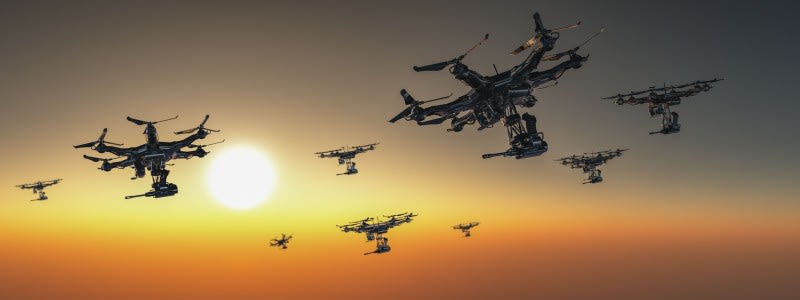
Local law enforcement agencies along the U.S.-Mexico border are increasingly adopting AI-powered drones to enhance their capabilities in combating drug trafficking, locating migrants attempting to cross into the United States, responding to emergencies, and addressing staffing shortages and reduced federal funding. While the use of drones has been a part of border operations for some time, creating what officials describe as a "virtual wall," the technology is now becoming more accessible to smaller local agencies. This shift is fueling an escalating technological arms race with Mexican drug cartels.
The number of U.S. agencies utilizing drones has increased by 150% since 2018, with many using them as first responders during critical situations. These advanced drones can operate for extended periods, utilize thermal imaging for nighttime searches, and quickly reconstruct accident scenes, providing valuable data for investigations and emergency responses.
In Arizona, the Cochise County Sheriff’s Office recently partnered with a Canadian company called Draganfly to implement a drone program that leverages artificial intelligence to monitor the county's vast border area, assist in search-and-rescue missions, and detect potential cartel activity. Similarly, in Laredo, Texas, authorities are deploying drones equipped with features that allow them to track vehicles, determine if suspects are armed, and even deliver Narcan to individuals experiencing overdoses. In New Mexico, police and fire departments in Sunland Park have already integrated drones into their operations to locate and assist stranded migrants or hikers.
At the same time, Mexican drug cartels are exploiting drone technology to their advantage. According to the Department of Homeland Security, thousands of drones are being flown into U.S. airspace, primarily at night, to monitor law enforcement activities and facilitate drug smuggling. Some cartel-operated drones in Mexico have even been used to drop explosives on rival groups, although no such incidents have occurred within the United States yet. National security expert Derek Maltz warned Fox News earlier this month that such actions could potentially occur on the U.S. side of the border.
Recent reports indicate that an average of 328 Mexican drones enter U.S. airspace within 500 meters of the border each day. Over a six-month period from July 2024 through December, federal authorities documented approximately 60,000 such drone flights occurring south of the border. This growing trend highlights the increasing reliance on unmanned aerial systems by both law enforcement and criminal organizations, raising concerns about the potential for further escalation in the region.
As the use of drones continues to expand, it remains to be seen how this technology will shape the future of border security and the ongoing battle against organized crime. The integration of artificial intelligence into these systems adds another layer of complexity, making it essential for agencies to stay ahead of emerging threats while ensuring the ethical and effective use of these powerful tools.
0 comments:
Ikutan Komentar